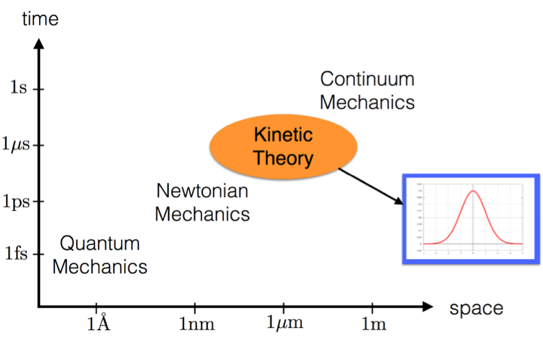By Jingwei Hu
About one year ago, I joined the University of Washington as an Associate Professor of Applied Mathematics. Before that, I was an Assistant and then Associate Professor in the Department of Mathematics at Purdue University, where I also held a courtesy appointment in the School of Aeronautics and Astronautics.
The past year has marked a big change in my career. While exploring the new culture and lifestyle in the Pacific Northwest, I am excited to join the Department of Applied Mathematics and start a new journey here. It has also been a busy year for me. I taught numerical linear algebra (for the first time!) in the Fall 2021 and enjoyed very much the interaction with students. From January to June 2022, I visited the Isaac Newton Institute at the University of Cambridge in England, where I co-organized the six-month scientific program “Frontiers in Kinetic Theory: connecting microscopic to macroscopic scales – KineCon”. If you are curious about what it is, here is a video interview I did with the Institute explaining the scope and objective of the program. If you would like to understand kinetic theory as a layperson, check out this nice article written for a general audience. Even though being physically in the UK for a couple of months, I was able to continue mentoring students in the UW. In particular, with AMath student Jack Coughlin (co-supervised with Prof. Uri Shumlak in Aeronautics & Astronautics), we embarked on an exciting project of developing dynamical low rank method for kinetic plasma simulations.
Now comes a little more detail about my research.
The world around us is inherently multiscale, in both space and time. To describe the dynamics of a complex system that is comprised of a large number of particles, one can use Newton’s second law (assume we ignore the quantum effects) to track the position and velocity of each individual particle. However, this is very expensive or even unnecessary if we are mainly interested in the averaging behavior of the system. On the other hand, one can take a much higher level viewpoint by just looking at the continuum description of the system (say, density, temperature, pressure, etc.). But this coarse graining process often turned out to be too rough as many fine details of the system are lost. Kinetic theory, which models the evolution of the probability density function in the phase space, exactly bridges the microscopic Newtonian mechanics and macroscopic continuum mechanics and is an indispensable building block in multiscale modeling hierarchy (see Figure 1). Applications of kinetic theory range across many disciplines in science and engineering, such as rarefied gas dynamics, electron/photon/neutron transport, plasma physics, collective behavior of biological and social systems, to name a few.


My research is mainly focused on the development and analysis of numerical methods for problems and equations lying at the center of kinetic theory. Over the past few years, I have developed 1) fast algorithms for collision operators (high-dimensional, nonlinear, nonlocal integral operators modeling particle collisions) which have resulted in highly efficient and accurate solver for the Boltzmann type kinetic equations; 2) structure-preserving numerical schemes for various kinetic equations to preserve their intrinsic physical structure such as positivity, conservation, and entropy decay; 3) multiscale numerical methods for kinetic equations connecting to microscopic or macroscopic scales in a seamless way. While continuing pursuing these directions, some of my current and future research interests include 1) dynamical low-rank method for solving high-dimensional kinetic equations; 2) deterministic and stochastic particle method for complex systems; 3) kinetic model reduction combining traditional and machine learning techniques.
As an applied mathematician, one important aspect of my work is the interplay between mathematics, engineering, and computational science; and I always enjoy the interdisciplinary collaborations that combine these fields. I look forward to working with UW students and faculty for many years to come.